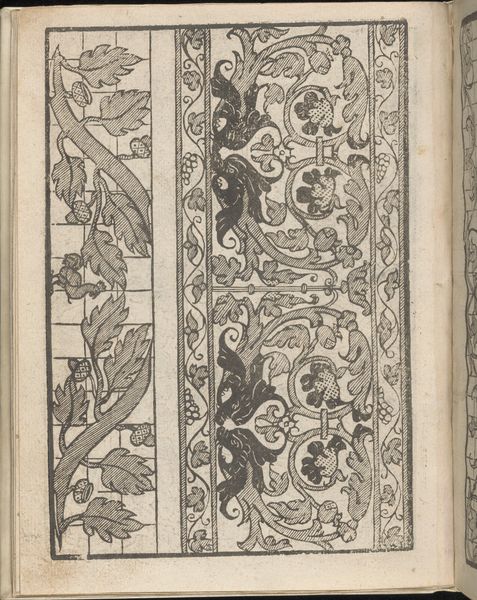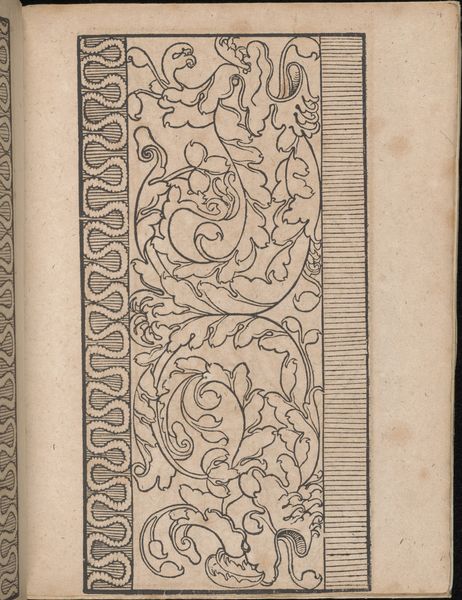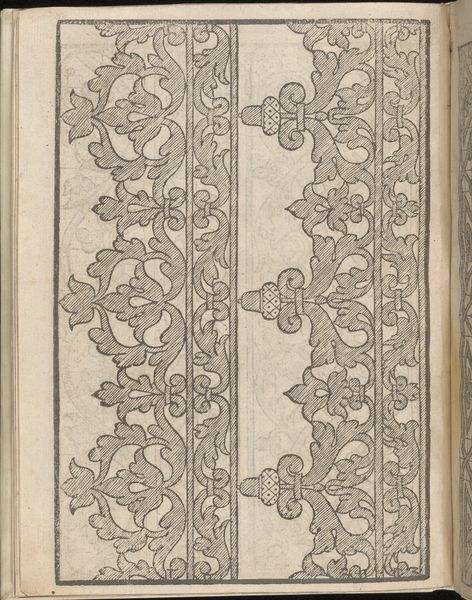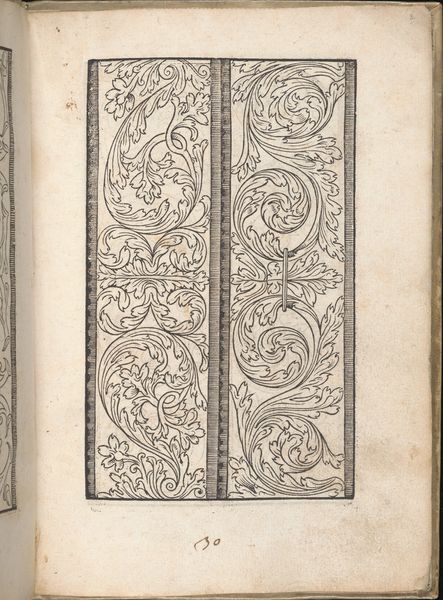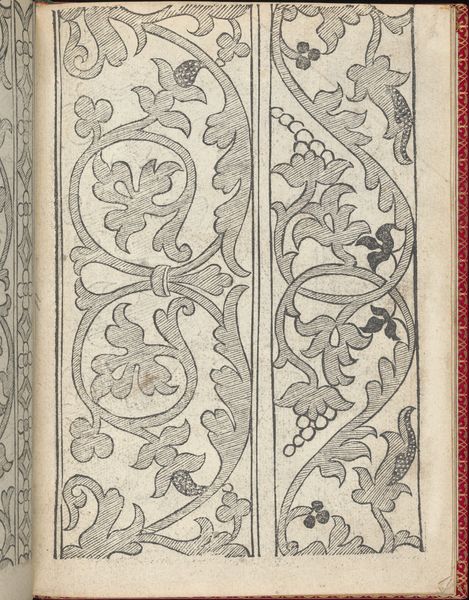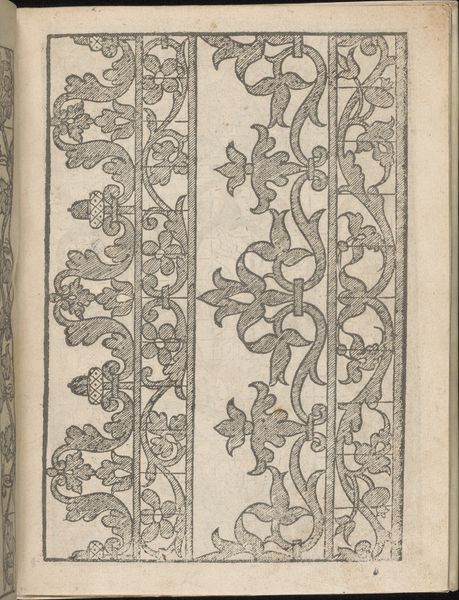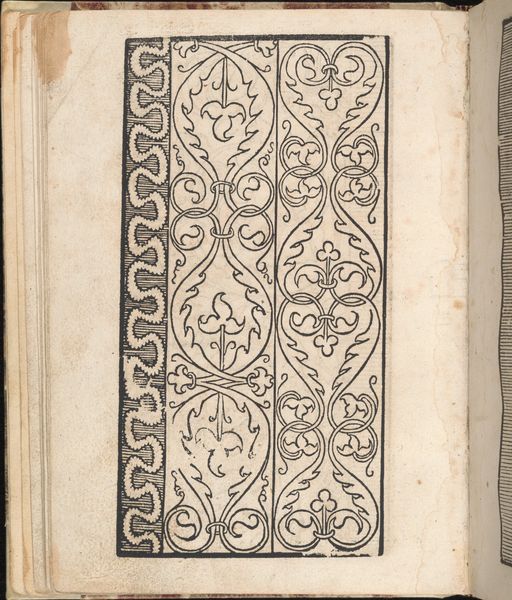
Ein new Modelbuch..., page 3 (recto) 1524
0:00
0:00
drawing, print, woodcut
#
drawing
# print
#
11_renaissance
#
geometric
#
woodcut
Dimensions: 7 5/16 x 5 3/8 in. (18.5 x 13.6 cm)
Copyright: Public Domain
Editor: Here we have page 3 from *Ein new Modelbuch…*, a woodcut print made by Johann Schönsperger the Younger in 1524. The contrasting botanical patterns create a visually appealing page. What strikes me is the purposeful use of nature as ornament, but how would this book function in society? Curator: That's a great question. Model books like these served as vital resources during the Renaissance, specifically for artisans and craftspeople. They democratized design ideas at a time when access to artistic knowledge was often restricted by guilds. Editor: Democratized how? Curator: Consider the political structure: Guilds controlled artistic production. The dissemination of patterns through prints challenged the guild's monopoly by allowing wider access. A silversmith or embroiderer could adapt these patterns without extensive formal training. It allowed local traditions to merge with contemporary styles. The ability to reproduce patterns exactly was groundbreaking, influencing fashion and design trends. What effect do you think mass production of this type had on ideas about originality in art? Editor: It seems contradictory! The print allows for mass reproduction, but the individual artisan still has the liberty to add a unique flair when using a given template. Curator: Precisely. The beauty lies in that intersection of mass dissemination and individual creativity. Artisans throughout society adapted the designs from these books. They served to encourage art consumption throughout many social classes, not only upper-class society. Editor: That makes perfect sense. It changes how I view printed images, they have less to do with fine art and more to do with artistic labor practices. Curator: Exactly. I now think that *I* know what *you* are thinking!
Comments
No comments
Be the first to comment and join the conversation on the ultimate creative platform.
